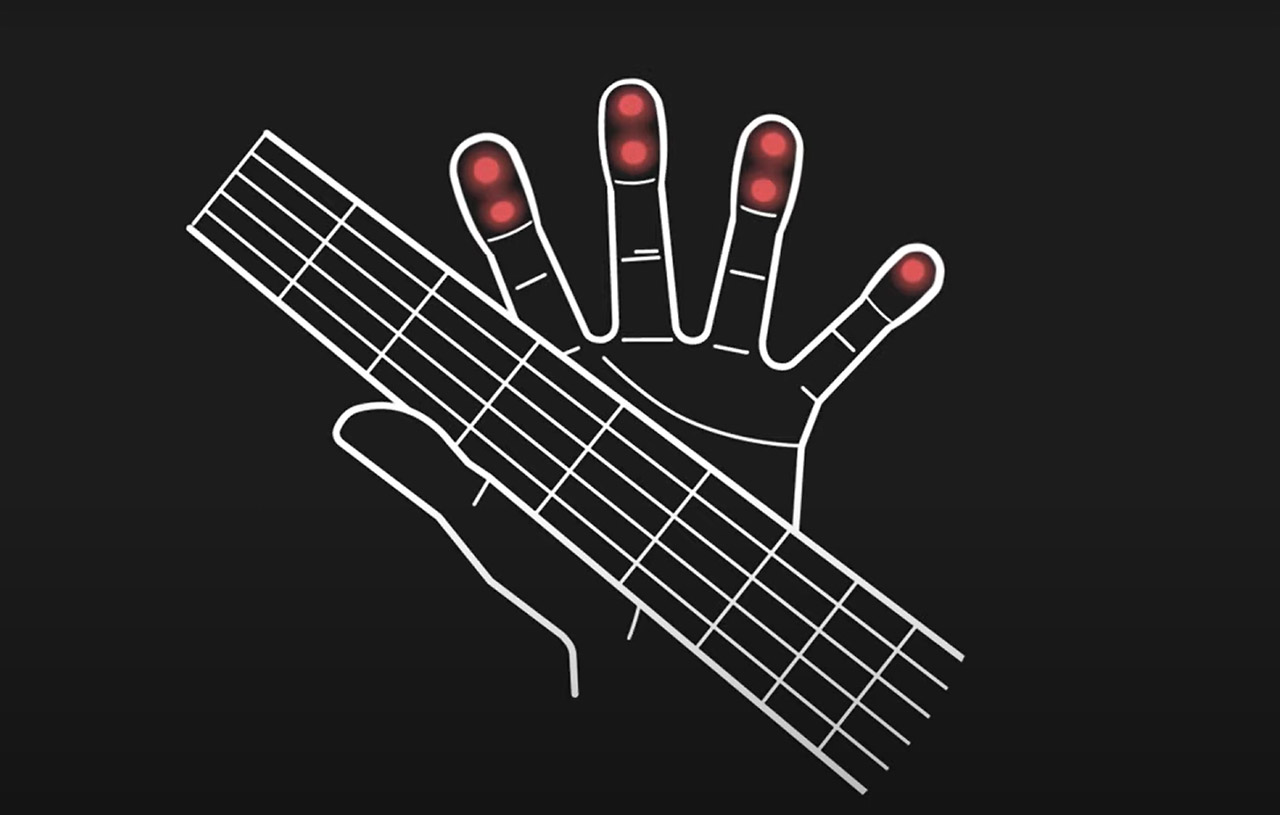Some pain during practice sessions as a beginner is normal, but it will go away
One of the most common challenges when first learning to play the guitar is dealing with fingertip pain—especially if you are learning to play with a steel-string guitar. Pressing down on the strings, especially for extended practice sessions, can cause your finger pads to feel sore and tender, and they may even seem discolored from the irritation.
This physical discomfort and pain is normal and part of the process of developing calluses, which are thicker, tougher skin patches that form to protect your fingertips. The pain typically subsides as these calluses develop, usually within a few days or weeks of consistent practice.
It’s helpful to take breaks when needed, avoid overplaying, and keep your practice sessions manageable to allow your fingers to adapt gradually. You don’t want blisters because they will truly hurt and heal slowly, and you’ll avoid your guitar—that’s lost practice time. Good guitar teachers want you to take it slow, be wise, and space out your practice sessions to avoid as much pain as possible. Smart practices lead to smart playing.
As pointed out in the video below, make sure you’re fretting the notes close to the frets, as this requires less pressure. Less pressure means a lighter touch and a lighter touch means natural fluidity down the road as you improve. Less is more.
Make sure you are holding your guitar properly, and focus on your picking technique to help distract yourself from the soon-to-be-gone pain of being a beginner. Calluses to the rescue! And, yeah, sometimes getting used to necessary stretching on some scale intervals and chords can cause pain in your muscles and joints, too. I advise always warming up with hand and arm stretches to get the blood flowing and avoid fatigue.
You may even want to consider adding an inexpensive Epiphone ukulele to your arsenal because its nylon strings are very easy to press down. In doing so, you will learn two instruments simultaneously, and the uke can become a retreat of sorts as your calluses develop. Yet, you’ll still be training your ear, learning scales and uke chords, and developing as a total musician, not merely as a guitarist.
FAQs
What are some of the reasons players give up playing the guitar?
I think many new guitar players give up because of various common struggles—everybody was where you are at the start of this journey, and they faced the same trials. One big issue is the aforementioned fingertip pain from pressing the strings down to meet a fret, which can be uncomfortable until calluses form.
Progress often feels slow, making it seem like you’re not improving. Chord changes are tricky, and many beginners struggle to move their fingers quickly and accurately while fighting the pain. If you are practicing every day with some guidance, believe me, you are improving. Wait for incremental gains, not miracles.
Finding enough time to practice can be tough with busy schedules, leading to inconsistent progress. Music theory can feel overwhelming, with scales, key signatures, and chords seeming too complicated initially. Unrealistic expectations of playing difficult songs right away can lead to disappointment when progress is slower than hoped.
Start with easy acoustic songs and remember that the ability to play simple chord progressions well and perfectly in time is much more useful in most musical scenarios than fretboard histrionics. Stick with it; you’ll be an intermediate player before you know it. Time spent is time invested. “Better a patient person than a warrior, one with self-control than one who takes a city,” says the wise King Solomon.
Where can I get proper guidance while learning guitar?
Bad habits can form without proper guidance, making playing harder than it needs to be, and repetitive practice of scales and simple songs can get boring, causing you to lose interest. Depending on your personality, learning alone can feel isolating, so having someone to practice with or getting feedback can be very motivating. The Gibson App can help with that on many levels. Challenge yourself and make an effort to outline some target metrics.
Lastly, getting a good sound from the guitar can be hard when you’re first starting to learn how to play. It can be a complicated instrument if you want it to be, but you shouldn’t feel overwhelmed. Buzzing strings and muted notes can be frustrating and make the instrument sound bad. Overcoming these issues with patience, proper help, and realistic goals can help brand-new players go the distance.
What if I’ve already overdone it and now have blisters?
One, if you’re in heavy pain or your skin is broken or in danger of being broken due to blisters, stop and heal. Two, if you don’t feel like playing or it’s unwise to play due to injury, I recommend putting that time to use watching video tutorials on musical subjects that interest you beyond the physical aspect of playing.
Getting grounded in music theory, music history, and the artists that inspire you is time well spent. I don’t think there’s anything wrong with taking a breather and letting your mind practice music as your body rests. Musicality isn’t just about fingers and technique. You may even want to use some of that time to clean your guitar, change the strings if that needs to be done, or tidy up your studio—I am utterly guilty of letting things like cables, pedals, and various devices like drum machines clutter up my space.
Explore the world of the Gibson App today and start your free trial on iOS and Android devices.

